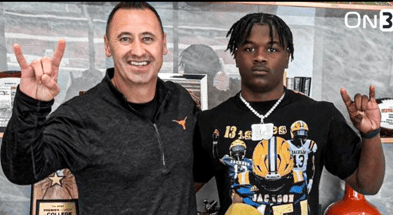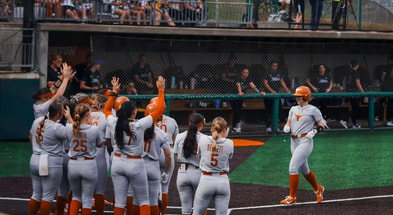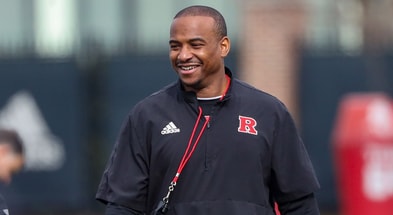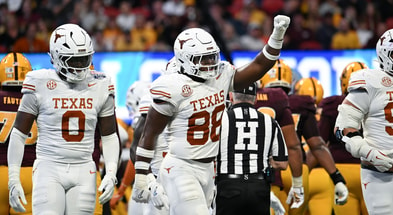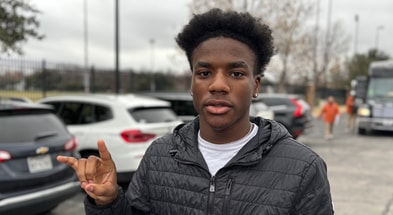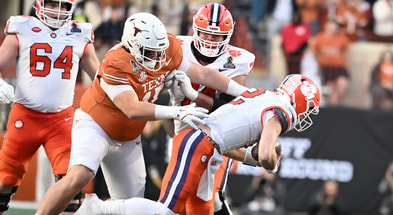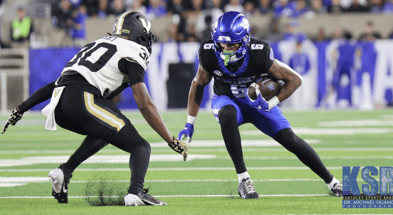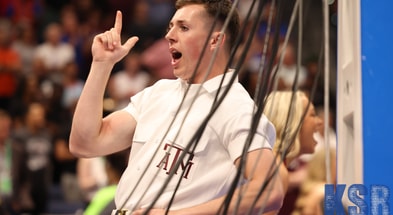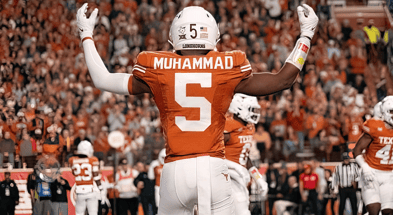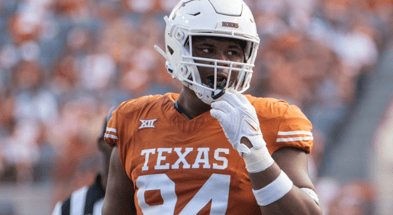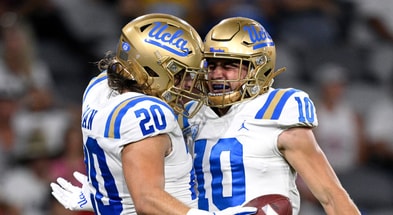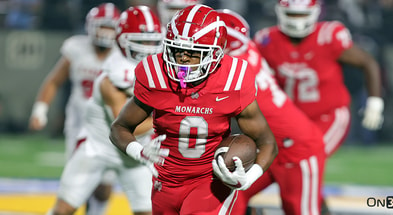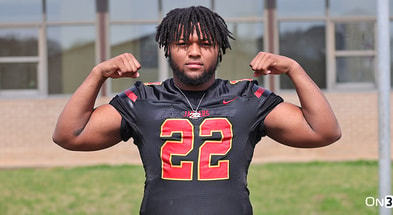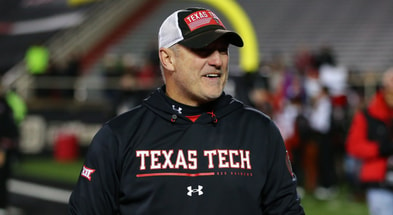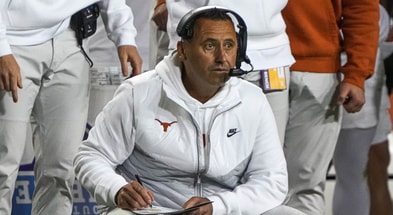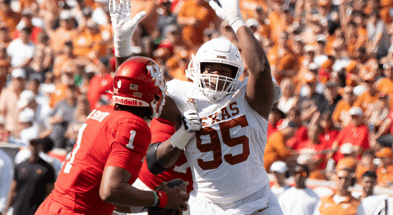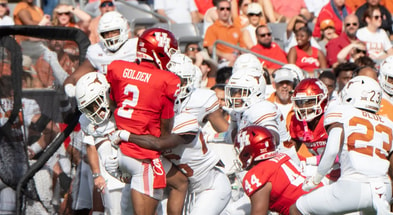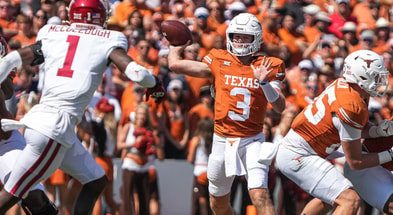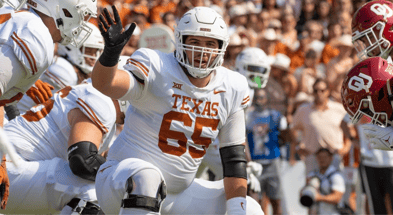Mike Leach, RIP to a true pirate

Evidently Mike Leach was a big fan of the Apache Indians.
[Get FOUR MONTHS of Inside Texas Plus for $1!]
He studied them, in addition to pirates, and loved to make notes and inferences about their approach to asymmetrical warfare. It was always strange to me someone based in Lubbock, an hour and half from the Comanche’s stronghold of Palo Duro Canyon, would choose the Apache who were driven from West Texas by the Comanche, for his inspiration on Native American guerrilla tactics.

Maybe Geronimo is just an easier figure to rally around than Quanah Parker or any particular Comanche chief? I dunno, it was hard to fully explain Mike Leach.
He definitely saw himself as raiding pirate in the game of college football, pillaging bigger programs of victories and breaking their rules and conventions while doing things exactly as he saw fit.
Everyone has a favorite Mike Leach story, some account from a person who encountered him that revealed what a hilarious and odd duck he really was.
Mine is when he made the son of Craig James sit in a dark room for three hours during a practice when the player wanted to avoid being around the team while recovering from a concussion, ultimately leading to Leach being fired for abuse.
Some of the details are pretty interesting and suggest Leach became fed up with an entitled kid and was willing to take on a powerful figure in sports media in order to enforce his way on the program.
Leach was a complicated fellow, a generous reading of the story still makes him sound like an old school, hard-nosed coach without a great sympathy for the dangers of concussions. It’s not a great look, yet there’s still something impressive and defining in Leach being unafraid to treat Craig James’ kid like as he would anyone else. He was a pirate after all. As far as he was concerned, it was his vessel and his rules. Adam James might be Texas football royalty, Leach didn’t care, pirates loot royalty. Go walk the plank, punk.
Texas Tech fired him, proving they were not really about the pirate life. They have yet to recover…
Leach went to Washington State and went 55-47 with a great 11-2 season in 2018. Then on to Mississippi State where he’d just managed a breakthrough to 8-4 in 2022 to make him 19-17 overall as a Bulldog. Nothing quite as great as the fairly sustained heights he reached at Texas Tech, but they were still strong.
Yesterday after his strongest and probably Leachiest season at Mississippi State yet…
…he passed away, removing from this earth one of the most stringent personalities and greatest minds college football has ever known.
Beyond thumbing his nose at Craig James and sailing off from Texas Tech in Queen Anne’s Revenge, here are some other college football rules the Pirate broke during his time amongst us.
Throw the dang ball
Mike Leach’s teams unapologetically threw the dang ball. Even this Mississippi State team, which I think was his best running team in years, did so as a solution to teams playing 3-down dime defense.
Will Rogers, who sounds like a character from a pirate story, attempted 566 passes for 3,713 yards at 6.6 ypa with 34 touchdowns and six interceptions. He lead the SEC in attempts, yards, and touchdown passes.
Another of many great Leach stories is the one involving his recruitment of quarterback Gardner Minshew to Washington State. Gardner related it as, “he asked me, ‘how would you like to come lead the nation in passing?’”
Leach followed up with a more blunt version and in one telling included the tidbit that this is the basic recruiting pitch he makes with every quarterback he recruits. If you played for Leach aboard his pirate ship, you were going to get to steer a lot. It was truly the genius of the offense, the degree of control he gave his signal-callers and the level of experience he gave them to be able to handle it.
It quickly got to the point where his quarterbacks at Texas Tech wouldn’t get consideration for the Heisman trophy, despite their insane numbers, because they were deemed a gimmicky offense. There was a major “these colonial savages won’t stand and fight against us proper gentlemen!” indignation against Tech’s strategies that gave way among some to, “can you believe the evil genius of Leach?? He’s up there in Lubbock cooking up crazy stuff like a mad scientist!”
The reality was much simpler.
Mike Leach in Texas Tech in 2005 was influenced by the exact same thing as Pete Carroll’s USC Trojans while they contended for a National Championship. That’d be the Lavell Edwards BYU teams of the 80s, who threw the ball around heavily. Mike Leach was a student at the time at BYU and was struck by the success of the Cougar passing game.
Why run the ball when throws challenge the defense more and more efficiently move the ball into the end zone?
Norm Chow took that approach, which at BYU still tended to include fullbacks and tight ends, and built a coaching tree which includes Lane Kiffin and Steve Sarkisian (BYU quarterback) today. Leach took the same approach and along with Hal Mumme, ditched the tight ends and fullbacks for more receivers, doubled down on the passing, and created the Air Raid.
Today the Air Raid has basically evolved into mainstream HUNH spread tactics, which are still asymmetrical but now feature heavy doses of runs and shot play/set pieces. Those are the real “mad scientist” offenses cooked up in labs. Not so for Leach, who always maintained an emphasis on progression passing and quarterback control at the line of scrimmage.
As you’ll see if you watch the Sportscenter tribute clip above, or if you’ve read my book which mentions Leach and his tremendous influence…
![Flyover Football: How the Big 12 became the frontier for modern football by [Ian Boyd] Flyover Football: How the Big 12 became the frontier for modern football by [Ian Boyd]](https://substackcdn.com/image/fetch/w_1456,c_limit,f_auto,q_auto:good,fl_progressive:steep/https%3A%2F%2Fbucketeer-e05bbc84-baa3-437e-9518-adb32be77984.s3.amazonaws.com%2Fpublic%2Fimages%2Fa503a514-9f97-457a-b8c0-4ab823ca8a4a_386x500.jpeg)
…Leach was a law student who decided to get into football coaching and reasoned sheerly through observation, “seems like teams should throw it more.”
Then he made a football career happen through force of will, despite a lack of background in the game, climbed to the rank of Power 5 head coach, and did things his way. His way meant throwing the dang ball.
Recruiting schmecruiting
Leach was never going to succeed at the highest levels of the college football game because he wasn’t wired to accumulate the talent necessary to make it happen. He just wasn’t the type to earn the trust of a major institution and work hard at politicking to marshal resources toward his efforts.
He’d rather have won his own way, which he could never quite pull off, but boy did he ever come close considering the circumstances. What’s more, he sure did recruit or otherwise attract amazing staffers to work around him.
There were a few times he was able to bring in a really strong talent and go dominate as a result. Plucking Gardner Minshew from the backup ranks of Alabama was a nice win and resulted in one of his two 11-2 seasons.
As a Texas alum who attended UT Austin from 2005-2008, another example also stands out of a time Leach acquired a top level talent and went 11-2.
Top 10
- 1New
Finebaum on Nico
'I would stay away'
- 2
Field of 64 projection
Predicting NCAA Baseball Tourney Field
- 3
Harrison Bailey
Reacts to Nico Iamaleava
- 4Hot
Jaydn Ott
Top RB enters transfer portal
- 5Trending
Angel Reese
Reacts to Hailey Van Lith
Get the On3 Top 10 to your inbox every morning
By clicking "Subscribe to Newsletter", I agree to On3's Privacy Notice, Terms, and use of my personal information described therein.
The talent would be this guy…
Crabtree was actually a really well regarded recruit. Much of the time the Leach teams at Tech were stocked with really solid 3-star quarterbacks who were in love with the idea of running his spread offense and throwing it for 5000 yards a year, offensive linemen who were tall, lanky kids they’d bulk up and let drop straight back from wide splits, and then quick but maybe not fast slot receivers no one else valued yet as they should.
Wes Welker and Danny Amendola, eventual New England Patriot stars, were typical of a Leach team. Welker was a 5-foot-9 kid out of Oklahoma City, Amendola a 5-foot-11 kid from The Woodlands (upscale northern burb of Houston). Amendola ran a 4.58 40 at the combine and a 4.25 shuttle, Welker a 4.65 40 and 4.01 shuttle.
Tech had tons of guys like that, including others such as Eric Morris (5-foot-8 little demon from West Texas) who didn’t go on to NFL success but tormented the Big 12.
At the time, people didn’t see much value in players like that who had enough speed to reach the end zone if they creased you but weren’t going to get open by just running vertically past defensive backs and might struggle against press coverage. Of course you don’t get pressed in the slot, so being 5-foot-9 isn’t a big deal.
It wasn’t just little white dudes no one else was excited about either, but those were an easier type for Leach to recruit out to West Texas and Leach did his best with easy recruitments.
But Crabtree was different. At 6-foot-2, 210 pounds out of Dallas Carter high school, everyone knew who he was and had a high opinion of him as a football player. However, he had some red flags and had to redshirt year one at Texas Tech to get all of his “paperwork” in order. He’d also been a quarterback at Carter and regarded as perhaps a best fit at safety (cue the “Mack Brown recruited X offensive star as a safety” meme). Look back at his recruiting pages and you’ll see despite a high rating, it was more the schools like Tech and Kansas chasing him rather than local powerhouses Oklahoma and Texas.
Consequently Leach got ahold of an elite caliber of athlete and the dude caught 134 balls for 1,962 yards and 22 touchdowns in 2007 as a redshirt freshman while they went 9-4. As a redshirt sophomore in 2008 he caught 97 balls for 1,165 yards and 19 touchdowns. Tech ran the ball more effectively and played good defense in 2008, so despite his decreased production they went 11-2 and beat Texas in the famous game clipped above.
Here’s the paradox about Mike Leach. It’s broadly assumed that his insistence on throwing all day and running only as a last resort would A) result in weaker defenses and B) never win at the highest levels.
Both are wrong.
Leach routinely had better defenses than many a HUNH spread coach with a stronger emphasis on the run game. His coaching tree includes defensive coaches Ruffin McNeil, Alex Grinch, and now Zach Arnett at Mississippi State. Many of his teams at Tech, Washington State, and Mississippi State included strong defensive units. His offenses often controlled the ball despite the high volume of passing and didn’t necessarily leave their defenses out to dry.
As for winning at the highest level with such a passing emphasis…LSU sort of already did it in 2019. Even if you want to quibble and note LSU had a better power run game and some different passing concepts, the main difference was LSU had a trio of future Pro Bowlers in quarterback Joey Burrow and wide receivers Justin Jefferson and Ja’Marr Chase. When they wanted to run on teams on 3rd and 2 or in some kind of dime, they had offensive linemen who could both pass protect and run block. They also had a defense loaded with future draft picks.
The reason Mike Leach and his version of the Air Raid never won a National Championship is because the same odd duck personality which made him so committed to doing things his own way aboard his own pirate ship also prevented him from successfully serving as an admiral for an imperial fleet. Those times when he got closest came from just having a little dose of obvious, high school blue chip talent in the mix.
A man who throws Craig James’ kid into an electrical closet was going to struggle to be empowered by big boosters to bring in big time talents from around the country and run roughshod over their diva natures while spitting chew and telling them to ignore the accolades from their “fat little girlfriend” because they weren’t throwing the ball worth a crap.
Mike Leach’s real impact
Mike Leach may be disqualified from being in the Hall of Fame by the smallest difference between his winning percentage and the cutoff.
Here’s his real impact though. Not even his schemes and the success they had, his hilarious media soundbites or the even better stories from his former players and staff about his antics off camera.
Just take a moment to read this hilarious account of his interactions with his quarterbacks at Washington State (perhaps they’ll make it free again).
Okay, you’re back?
Leach’s biggest impact was the ENORMOUS VOLUME of former players and coaches who worked alongside him, absorbed his innovative ideas, and have gone on to dominate this sport.
Here’s just a few of the coaches around the game from his tree:
- Lincoln Riley, head coach at USC and quarterback-turned assistant for Leach.
- Josh Heupel, head coach at Tennessee and former QB for Leach.
- Kliff Kingsbury, head coach for the Arizona Cardinals and former QB for Leach.
- Sonny Dykes, head coach for TCU and former WR coach for Leach.
- Neal Brown, current HC for the West Virginia Mountaineers and former WR for Leach.
- Graham Harrell, current OC for West Virginia and former QB for Leach.
- Dana Holgorsen, current HC for Houston and former WR and coach for Leach.
- Alex Grinch, current DC for USC and former DC for Leach.
- Eric Morris, new HC for North Texas and former WR for Leach.
- Wes Welker, WR coach for the Miami Dolphins and former WR for Leach.
- Seth Littrell, former North Texas HC, current free agent, former fullback for Leach.
- Art Briles, former Baylor HC and former assistant for Leach.
- Dave Aranda, current Baylor HC and former grad assistant for Leach.
None of that even speaks to his massive impact at the high school level or the trickle up to the NFL which has occurred in the last half-decade.
That’s a legacy we would all aspire to come close to matching. To be a prominent figure in inspiring and molding so many people who’d go on to have such an impact.
RIP to the Pirate.
This article was originally published on Ian Boyd’s substack “America’s War Game,” a newsletter about football’s strategies and place in American culture.

